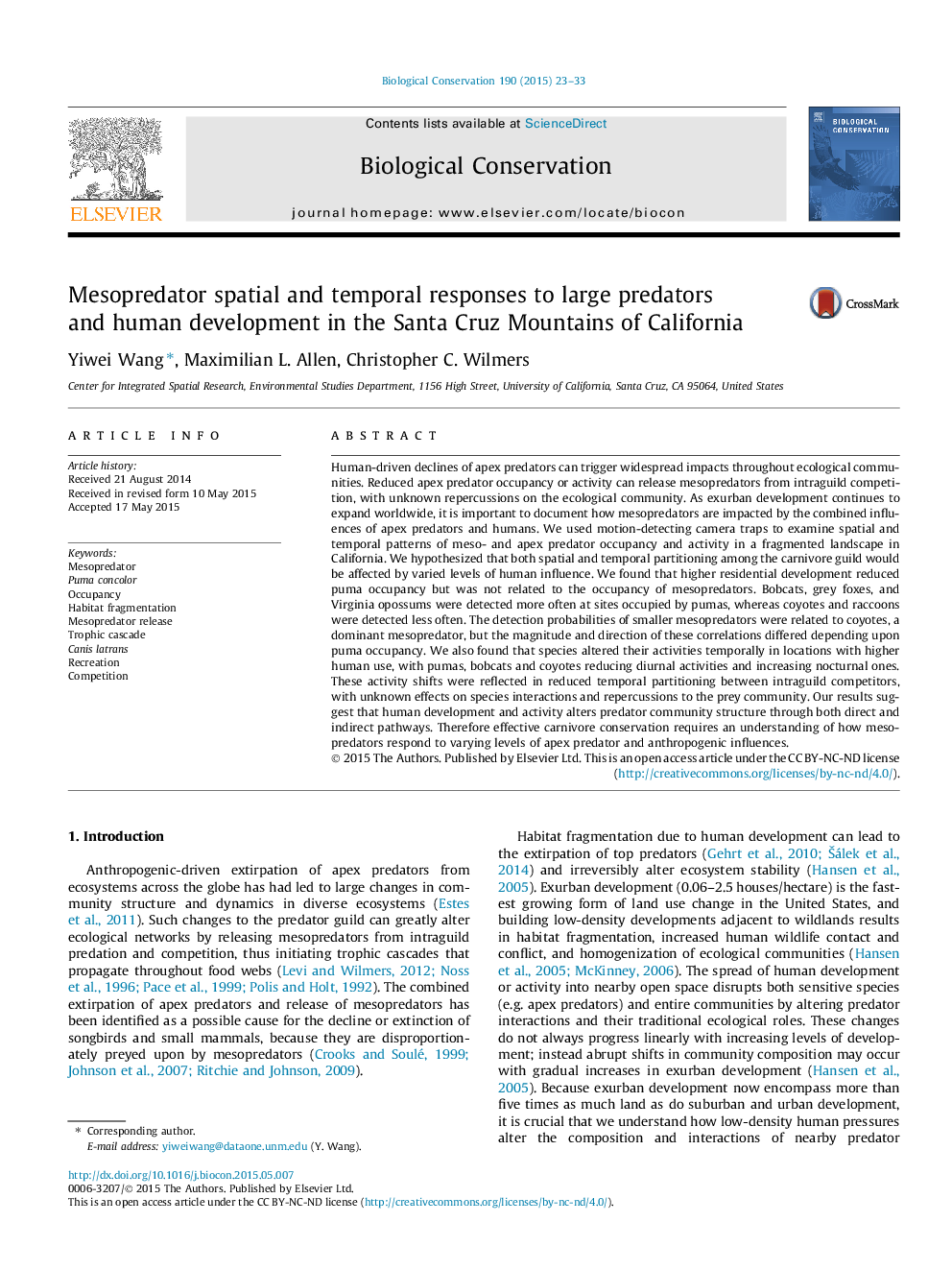| کد مقاله | کد نشریه | سال انتشار | مقاله انگلیسی | نسخه تمام متن |
|---|---|---|---|---|
| 6299123 | 1617911 | 2015 | 11 صفحه PDF | دانلود رایگان |
عنوان انگلیسی مقاله ISI
Mesopredator spatial and temporal responses to large predators and human development in the Santa Cruz Mountains of California
ترجمه فارسی عنوان
پاسخهای فضایی و زمانبندی بینزنده به شکارچیان بزرگ و توسعه انسانی در کوههای سانتا کروز کالیفرنیا
دانلود مقاله + سفارش ترجمه
دانلود مقاله ISI انگلیسی
رایگان برای ایرانیان
کلمات کلیدی
موضوعات مرتبط
علوم زیستی و بیوفناوری
علوم کشاورزی و بیولوژیک
بوم شناسی، تکامل، رفتار و سامانه شناسی
چکیده انگلیسی
Human-driven declines of apex predators can trigger widespread impacts throughout ecological communities. Reduced apex predator occupancy or activity can release mesopredators from intraguild competition, with unknown repercussions on the ecological community. As exurban development continues to expand worldwide, it is important to document how mesopredators are impacted by the combined influences of apex predators and humans. We used motion-detecting camera traps to examine spatial and temporal patterns of meso- and apex predator occupancy and activity in a fragmented landscape in California. We hypothesized that both spatial and temporal partitioning among the carnivore guild would be affected by varied levels of human influence. We found that higher residential development reduced puma occupancy but was not related to the occupancy of mesopredators. Bobcats, grey foxes, and Virginia opossums were detected more often at sites occupied by pumas, whereas coyotes and raccoons were detected less often. The detection probabilities of smaller mesopredators were related to coyotes, a dominant mesopredator, but the magnitude and direction of these correlations differed depending upon puma occupancy. We also found that species altered their activities temporally in locations with higher human use, with pumas, bobcats and coyotes reducing diurnal activities and increasing nocturnal ones. These activity shifts were reflected in reduced temporal partitioning between intraguild competitors, with unknown effects on species interactions and repercussions to the prey community. Our results suggest that human development and activity alters predator community structure through both direct and indirect pathways. Therefore effective carnivore conservation requires an understanding of how mesopredators respond to varying levels of apex predator and anthropogenic influences.
ناشر
Database: Elsevier - ScienceDirect (ساینس دایرکت)
Journal: Biological Conservation - Volume 190, October 2015, Pages 23-33
Journal: Biological Conservation - Volume 190, October 2015, Pages 23-33
نویسندگان
Yiwei Wang, Maximilian L. Allen, Christopher C. Wilmers,
